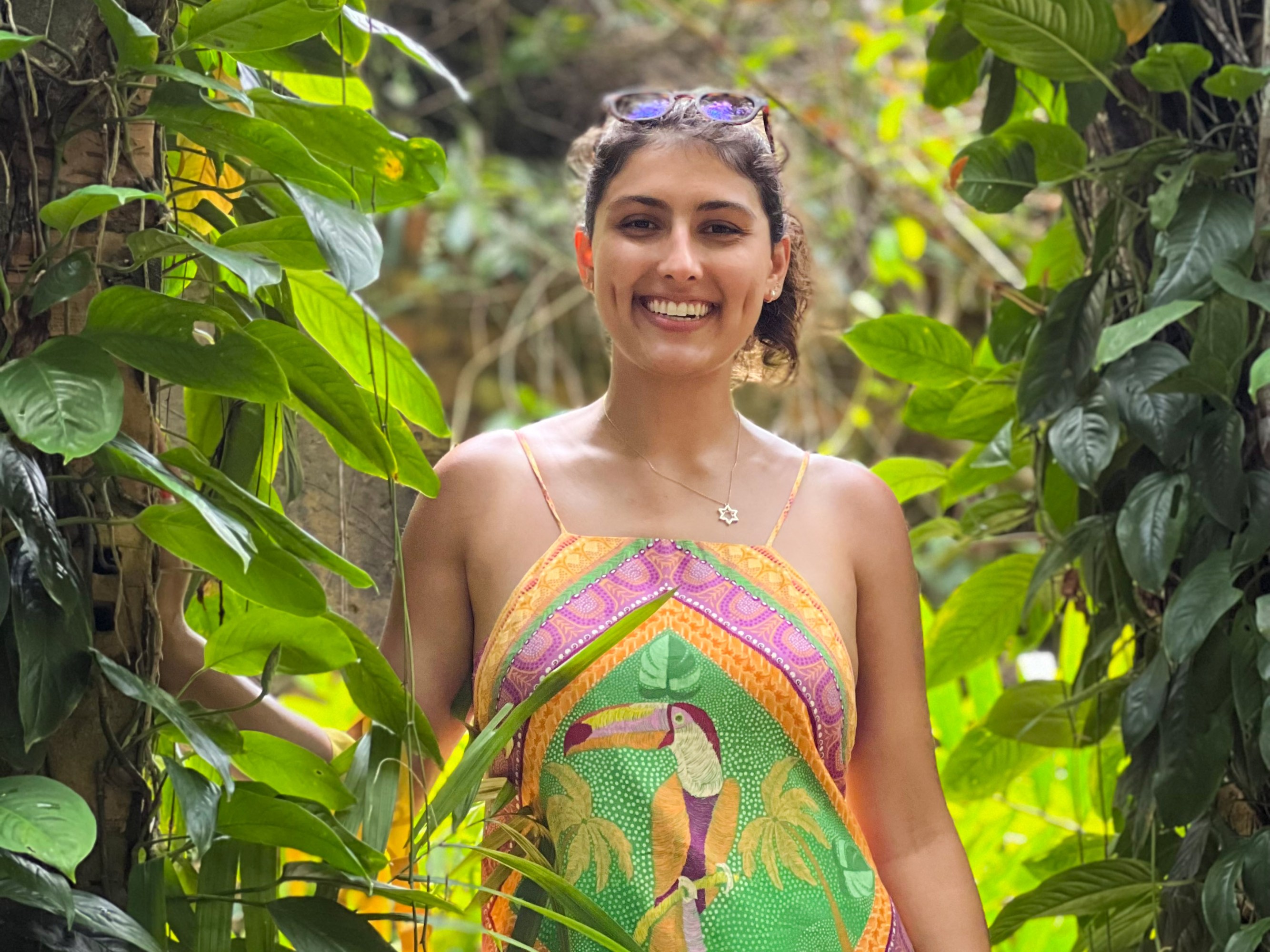Learning and listening in Amazonia

In the town of Alter do Chão, where my professor lived, traditional Paraense carimbó music dominated everyone’s social lives. As an undergraduate who was double-majoring in music, I decided to join the town’s major carimbó group, Grupo Cobra Grande. Despite my rudimentary grasp of Portuguese, I knew that I could communicate with the group through music. With the help of offline Google Translate and charades, I managed to learn not only the intricate rhythms and dance moves involved in this traditional musical style, but also the meanings of the lyrics and the associated folklore. We began every rehearsal and performance with a song calling the mythical frog Muiraquitã into the Lago Verde lake to protect the town and the people from evil spirits. The dance moves in carimbó reflect stories about the famous Amazonian pink dolphin coming to land in the evenings to court young women—men wear hats to cover their dolphin spouts and dance in circles around the women like dolphins jumping in and out of the water.

COURTESY OF THE AUTHOR
I was lucky enough to return to Brazil two years later as a Fulbright scholar in Manaus, Amazonas, where I got to study natural rainforest materials such as curauá fibers and Marasmius yanomami fungi in the lab, research their traditional uses in artisanal crafts, and explore their potential as sustainable structural materials. I also volunteered at the Nobre Academia de Robótica, an organization that gives children from impoverished backgrounds, including Indigenous youths from the São Sebastião community, free access to education in coding, science, and technology. They learn to use drones for land surveillance and develop sensors to monitor environmental conditions, honoring their cultural legacy and extending it with technological capabilities.
When I met a local clarinetist named Abner at the Manaus synagogue, he invited me to watch as he recorded music with Eliberto Barroncas, an art professor at a local university who played instruments he crafted from repurposed “found” objects such as cardboard tubes, rubber tires, and marbles. As Abner played the clarinet, Barroncas created a background that immersed the listener in the sounds of Amazonia: croaking frogs, flowing water, shaking leaves. Afterward, we discussed the interconnectedness of nature and music over coffee. Barroncas’s philosophy is that making music should come from the soul, as a tangible expression of one’s natural surroundings. This idea resonated with me, inspiring me to deepen the scope of my extracurricular research on eco-organology—the study of how instruments are connected to the natural world. I shared several of his quotes when I presented my research at the American Musicological Society annual conference in the fall of 2022.
Through my work with the Nobre Academia de Robótica, I also met the local music producer and arranger César Lima, who developed a virtual-reality app called “The Roots VR” to introduce users to over 100 Amazonian instruments. This app allows users to interact with a variety of these instruments in virtual settings, creating an accessible way for people worldwide to engage with and appreciate the rich musical heritage of the Amazon. His work demonstrates how modern technology can be harnessed to preserve and promote musical traditions.
“I told Fred that everyone needed to come to the Amazon. Everyone needed to taste the tingling jambú flower, drink suco de taperebá, and perform in the famous Teatro Amazonas opera house.”
I found myself sharing stories of these incredible people with my music friends at MIT and with Fred Harris, director of the MIT Festival Jazz Band, a group I joined as an undergrad. I told Fred that everyone needed to come to the Amazon. Everyone needed to taste the tingling jambú flower, drink suco de taperebá, and perform in the famous Teatro Amazonas opera house. We had to not just introduce other students to the music of the Amazon, but take them there so they, too, could collaborate with Indigenous performers. In the spring of 2023, Fred brought some 80 MIT student musicians, none of whom spoke Portuguese, to the Rio Negro in the middle of the Amazon rainforest. These students, along with approximately 20 staff, faculty, and guest artists, communicated with the locals through science and music.
The project Fred led, called “Hearing Amazônia,” was a testament to the power of interdisciplinary collaboration. Influenced by my experiences in the Amazon, and further inspired by guest artists Luciana Souza, Anat Cohen, and Djuena Tikuna, it culminated in a concert featuring Brazilian and Amazonian music influenced by the natural world. Working together, we created a musical narrative of the Amazon’s beauty and the looming threats it faces. We went on to perform it both at MIT and in the Amazon.

MIT VIDEO PRODUCTIONS
This project transcended the traditional boundaries between education and activism. Bringing MIT student musicians to the Amazon provided a platform for experiential learning unlike any other. It wasn’t just about playing music; it was about understanding music as a living entity, deeply entwined with the environment where it originates.
In planning the trip, we knew that engaging with the Indigenous communities was essential. We partnered with the Nobre Academia de Robótica to visit the São Sebastião community so the whole group could learn about their culture, their traditions, and the ways in which science and tech are helping them protect their land and maintain their fishing economy. We also took part in workshops with César Lima and Eliberto Barroncas. The opportunity for students to play Professor Barroncas’s instruments and take part in an impromptu jam session was a powerful demonstration of music as a universal language, transcending barriers and connecting us to the environment and each other. He and Lima influenced us beyond the realm of music, offering insights into the broader implications of cultural sustainability and environmental stewardship. Their work demonstrated that the preservation of cultural practices and natural ecosystems is not only an artistic or environmental issue but also a matter of global responsibility.





